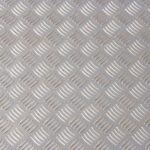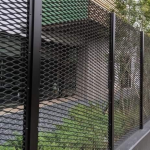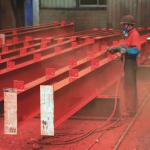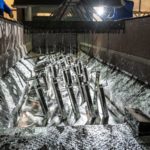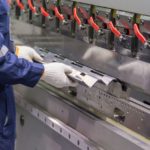About Savesteel - One-Stop Steel and Services Total Solution
We're a Leading Total Steel Solution Provider for the oil and gas, shipbuilding, construction and trading industries based in Singapore.
Other than the wide range of steel at competitive pricing, we also manage projects on behalf of our client.
Build and managed by a team of veterans, we understand complex ideas to build your dream structure isn't always something that is easily translated through emails. Hence, we prefer to serve your needs with live chat service such as Whatsapp.
We're always available for you one-click away!
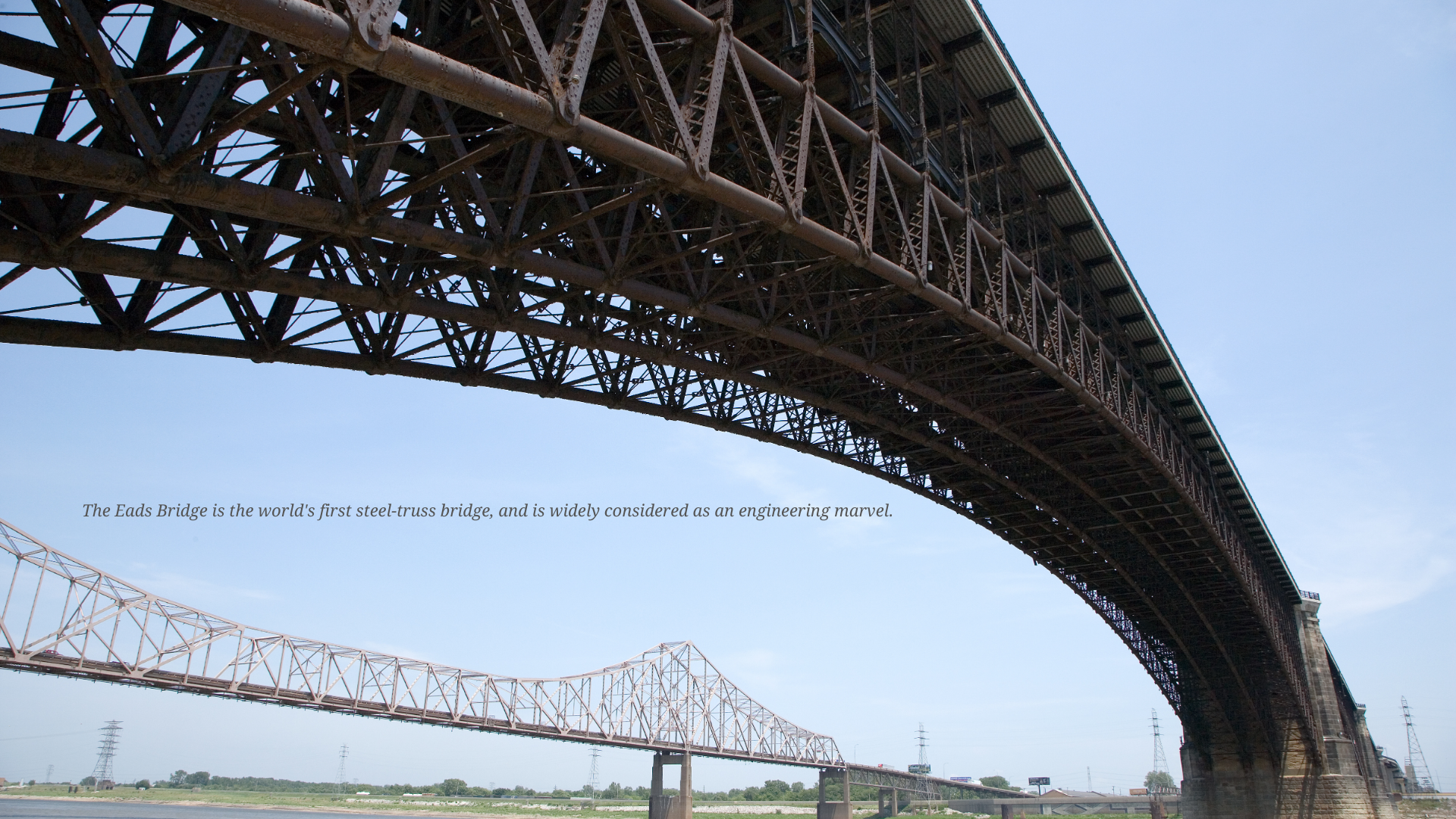
Steel Products
Steel Plate & Sheet
| Description |
For hull structures, according to classification societies, shipbuilding steel plates are categorized based on yield strength into general strength, high strength, and ultra-high strength. |
| Specification |
General strength shipbuilding steel plate owned yield strength 235MPa, the tensile strength 400 - 520MPa, with 20°C, 0°C. -20°C and -40°C impact value is 27J, 34J, 41J. High strength shipbuilding steel plate with higher yield strength (315-390 MPa) and higher tensile strength (440~660 MPa), the impact test temperature are including 0°C, -20°C, -40°C, -60°C. |
| Common Applications |
Ship hull, high-temperature bolts, stay bolts, axle shafts, gear shafts, crankshafts, sprockets, spindles, gears, and oil well tool joints. Depends a lot on the use of the ship, such as ocean-going, coastal, inland navigation, polar transport ships, LNG transport ships, chemical carriers, desalination equipment, etc. |
| Common Processing |
Hot rolling, controlled rolling, or two-stage controlled rolling, followed by controlled cooling. Smelting is also performed to reduce harmfulness of steel. |
| Measurement | Full dimension here |
| Description |
Hot rolled steel is produced by rolling steel at temperatures above its recrystallization point (typically 1700°F or higher). This processing enhances its formability and workability compared to unprocessed steel, simplifying subsequent operations. Steel plates are hot rolled products known for their substantial thickness. Items with a thickness greater than 4.5 mm are categorized as steel plates, while those exceeding 100 mm are generally known as thick steel plates. |
| Specification |
Steel Plates specifications generally surround its yield strength and tensile strength. You may find the charts here helpful. |
| Common Applications |
Steel plates has a very wide application base. Construction industry, military, household appliances, automotive, road work, etc. |
| Common Processing |
Produced at elevated temperatures on rolling mills, then temper passed or stretcher leveling downstream to eliminate coil memory. Further processing may be required for different finishings. |
| Measurement | Full dimension here |
| Description |
Chequered plates, or checker plates, are lightweight metal sheets with a raised pattern for improved traction and aesthetics. Known for their anti-slip properties and durability, they are ideal for outdoor architectural uses and areas with heavy foot or equipment traffic. Available in galvanized, aluminum, and stainless steel, they offer excellent corrosion and weather resistance. |
| Specification |
A raised lug pattern is able to can be rolled in any grade of steel you choose. Hence there's a wide range of steel grade and pattern to choose from to match your needs. |
| Common Applications |
Ornamental, structural uses, residential and commercial properties, engineering, manufacturing, and marine construction. |
| Common Processing |
Hot-rolled first for a steel plate or sheet shape. After, lug patterns can be rolled in. |
| Measurement |
Structural Steel
| Description |
|
| Common Applications | Universal Steel Beams are essential in various structural steel applications, particularly in building construction. Their shape makes them ideal for supporting wide-spanning weights, such as floor joists. Commonly used in large-scale projects, these beams must be made from high-quality steel to ensure structural stability. |
| Common Processing | 3 plates of steel are welded together in a "I" shape. The process is straightforward, but quality of the plates and welding skill is what makes it a reliable structural element. |
To ask more about Steel Universal Beams and Columns, click here
| Description |
|
| Common Applications |
-retaining walls, |
| Common Processing |
-cold-rolled |
| Description |
|
| Common Applications |
-Shipbuilding, |
| Common Processing |
-Cold-rolled |
| Description |
|
|||
| Common Applications |
|
|||
| Common Processing |
-cold-rolled |
| Description |
|
| Common Applications | - manufacturing machinery, - tools, and - equipment, - constructing buildings, - bridges, and - infrastructure projects. |
| Common Processing |
- hot rolling, |
| Description |
|
| Common Applications | - Foundation and Slab Construction - Walls and Columns - Roads and Pavements - Precast Concrete Elements |
| Common Processing |
- Cold-rolled |
Gratings and Expanded Metals
| Description | Steel Grating is a durable metal grid designed to offer enhanced traction in industrial environments, facilitating safe footing. It features a pattern that promotes efficient liquid and debris drainage, often including raised surfaces for improved grip. With its high strength, Safety Grating can withstand heavy loads yet remains easy to maneuver, cut, customize, and install onsite. Its corrosion-resistant properties, available in stainless steel, aluminum, and galvanized options, make it a favored choice for improving safety and minimizing maintenance in industrial settings. |
| Common Material | carbon steel, galvanized steel, aluminium, austenitic stainless steel |
| Common Applications | Stairs and steps, Scaffolding and work platforms, Catwalks, Vehicle steps or access trays, Roof access or walkways, Balconies, Non-slip industrial flooring for wet areas. |
| Description |
Expanded metal is a sheet metal mesh. It is made by stretching a slitted sheet of malleable metal. The orientation of the slits is perpendicular to the direction of the stretch. The result of such stretching is an array of holes on the slits – to give a mesh form. |
| Common Material |
|
| Common Applications |
Its many small openings in the material allow flow through of air, water, and light, while still strong (compared to wire mesh) provides a mechanical barrier to larger objects.
|
| Common Processing |
|
Our Services
Steel Processes
| Description | Shot blasting is a surface treatment process that uses high-velocity steel abrasives to clean and prepare materials for secondary finishing operations. By directing abrasive particles at speeds of 65-110 m/second, shot blasting effectively removes surface contaminants through abrasive impact, ensuring excellent cleaning and preparation. |
| Purpose | - The cleaning of iron, steel, non-cast parts, forgings, etc. - Mechanical cleaning of sheets, rods, coils, wire, etc. - Shot peening to alter mechanical properties (increasing resistance to fatigue for springs, gears, etc.) - Preparing surfaces to be painted, coated, etc. |
| Description | Primed steel involves applying a primer or undercoat before painting to improve adhesion of the final coating. This process provides additional protection and enhances the durability of both the steel and the coating. |
| Purpose |
- Protect against the effects of environmental exposure. |
| Description | Steel shearing is a manufacturing process used to cut sheet metal into precise shapes or sizes using a machine called a shear. This machine employs a sharp blade to apply high force, cleanly slicing through the metal. Widely utilized in manufacturing and metalworking industries, steel shearing ensures efficient and accurate cutting of metal sheets by bending and breaking them along straight lines. The process involves a set of blades, a hold-down mechanism for securing the metal sheet, and a backgauge for precision cutting. |
| Purpose |
Shearing is usually the first step in processing steel. Large pieces are stamped or sheared into smaller pieces, preparing it for further fabrication or assembly in various industrial applications. |
| Description |
|
| Purpose |
This coating enhances the steel's durability and provides long-lasting, maintenance-free corrosion protection at a reasonable cost for decades. |
| Description |
|
||||
| Purpose |
Similar with shearing, cutting and bending is usually the first step to shape the steel towards the resulting form. |
Project Driving Services
| Description | We provide various testing services for your steel materials, such as ultra sonic testing, impact testing, thickness property, and more… |
| Purpose | It is important to do structural analysis of steel because it helps us understand how the steel will behave under various loads and influences. This can help ensure that the steel is used in a safe and reliable way, in everything from buildings and bridges to planes and cars. The test results also influences the further processes such as chemical treatment required. |
| Description | Construction logistics involves planning, coordinating, and executing the transportation, storage, and distribution of materials and equipment for any projects. This process ensures that all necessary resources are available when and where needed, and are used efficiently throughout the project. |
| Purpose |
Effective logistics can significantly impact a project's success, preventing delays, disruptions, and accidents, while ensuring timely completion, budget adherence, and high-quality standards. |
| Description | Project management involves planning, organizing, and overseeing a project's execution from start to finish. A project manager defines goals, creates actionable plans, allocates resources, and manages the project team. They ensure projects are completed on time, within budget, and meet stakeholder satisfaction. Effective project management requires strong communication, attention to detail, and adaptability, and is essential in industries such as construction, engineering, software development, and marketing. |
| Purpose |
Clear, shared goals and objectives |
| Description |
|
| Purpose |
This coating enhances the steel's durability and provides long-lasting, maintenance-free corrosion protection at a reasonable cost for decades. |
FAQ - General
By considering these factors and conducting a thorough research, you can make an informed decision when choosing a steel supplier that best fits your requirements.
-
Quality: Look for a supplier with a reputation for providing high-quality steel products. Check if they adhere to industry standards and have certifications from relevant organizations.
-
Variety of Products and Services: Consider a supplier that offers a wide range of steel products, services, and capabilities to meet your specific needs. Whether it's sheets, bars, tubes, specialty alloys, or services such as galvanizing, reshaping, project management, or even to analyze the materials already in use.
- Experience: A prospective supplier should be transparent regarding their experience working with the materials that are the best for your job. This is a straightforward question, but being upfront will be mutually beneficial for your relationship.
-
Reliability: Opt for a supplier with a consistent track record of reliability in terms of product availability, delivery times, and customer service.
-
Location: Choose a supplier located conveniently to your site or business to minimize transportation costs and lead times.
-
Price Competitiveness: While price is important, it shouldn't be the sole factor. Compare prices among different suppliers, but also consider the quality and services offered.
-
Technical Support: Look for a supplier that provides technical support and assistance, especially if you have specific requirements or need guidance on material selection.
- Regulatory Compliances: Partnering with a seasoned supplier who understands applicable compliances is the only way to go. This is an area where you don't want to cut corners, as you could quickly find yourself in not just hot, but boiling water.
-
Customer Service: Evaluate the supplier's responsiveness, communication, and willingness to address your concerns or inquiries promptly.
-
Reputation: Research the supplier's reputation by checking reviews, testimonials, and references from past customers or industry peers.
-
Sustainability: If environmental considerations are important to you, inquire about the supplier's sustainability practices and certifications.
-
Flexibility: Consider a supplier that can accommodate custom orders, provide value-added services like cutting and machining, and adapt to your changing needs over time.
- Schedule a visit: There's no substitute for firsthand observation. Arrange a visit to your prospective supplier's facilities to assess their working environment and determine compatibility through intuition.
We specialize deeply in 2 kinds of steels; SS304 and SS316.
As a quick way to differentiate them, 304 contains 18% chromium and 8% nickel while 316 contains 16% chromium, 10% nickel and 2% molybdenum. The molybdenum is added to help resist corrosion to chlorides (like sea water and de-icing salts).
Upon quotation issued, our written prices are promised until expiration date. Expiration date is usually 30 days from date of issue unless otherwise stated on the quotation.
Feel free to discuss this with us for possible flexibility!
Get In Touch
We would love to hear from you!
| Sales | +65 9438 0799 |
| +65 9438 4378 | |
| Sales@savesteel.com | |
| Address | 71 Woodlands Industrial Park E9, #08-08, WAVE 9, Singapore 757048 |



